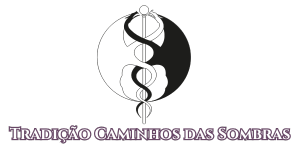In ancient Greek mythology, witchcraft was seen as a mysterious and potent force—an eerie art deeply rooted in nature’s hidden rhythms and lunar cycles. Witches were associated with baneful herbs, transformation, and the ability to alter reality. At the center of this mystical tradition stood Hecate: goddess of liminality, magic, and transformation.
Hecate is more than a deity; she is an embodiment of the craft itself. She governs life’s cyclical nature through her triple form—maiden, mother, and crone—mirroring the waxing, full, and waning moon. These aspects do not just represent stages of life, but the initiatory gates of magical understanding. In this way, the mythology surrounding Hecate reveals the essence of what witchcraft meant in the ancient world.
The Psychopomp and the Liminal
Hecate’s magic is not limited to earthly cycles—she is a psychopomp, a guide who walks freely between the worlds of the living and the dead. This role is especially evident in the myth of Persephone. When Persephone was abducted by Hades, it was Hecate—alone among immortals—who heard Demeter’s grief. As told in the Homeric Hymn to Demeter:
“But not one of the immortal ones, or of human mortals, heard her voice… except for the daughter of Persaios… She heard it from her cave. She is Hekate, with the splendid headband.”
The cave, neither fully above nor below ground, acts as a liminal space and a symbolic portal to the underworld. Hecate emerges from this space to bridge the world of the living (Demeter) and the dead (Persephone). In the Eleusinian Mysteries, Demeter and Persephone represent the cycle of life and death, and Hecate becomes the connective tissue between them—an intermediary of powerful magical significance.
The Witch as a Liminal Figure
The archetype of the ancient witch reflects Hecate’s own liminality. Witches, like her, were seen as intermediaries between realms. Necromancy was often practiced at crossroads—places where the unburied dead were abandoned—further linking witchcraft with the chthonic and the marginalized. As the goddess of crossroads, Hecate presided over such rituals, making her the natural patroness of necromancers and night wanderers.
Hecate and the Axis of Worlds
Hecate’s lunar and chthonic attributes came to symbolize her as an axis mundi—a central pillar aligning the heavens, earth, and underworld. Her presence in the myth of Medea highlights this. Medea, a priestess of Hecate, channels these liminal forces in her magical rites. In Metamorphoses, Ovid writes:
“And thou, great Hecate, friend to my design;
Songs, mutt’ring spells, your magick forces join…”
Through Medea, we see that witchcraft draws its power from celestial bodies, earthly herbs, and infernal gates—domains united by Hecate. The night, while not inherently liminal, becomes a veil through which the hidden thrives. Lunar goddesses like Artemis and Diana—often syncretized with Hecate—usher in this time, reinforcing the association between femininity, magic, and nocturnal mysteries.
Divine Magic and the Path of Transcendence
Witchcraft in antiquity wasn’t merely superstition; it was seen as the exercise of divine power. The practitioner did not draw power from the mundane, but from sacred forces—of which Hecate was the conduit. In the Chaldean Oracles, Hecate is described not just as a goddess, but as the very substance and interface of the divine. Unlike mystery cults that sought a blessed afterlife, the goal here was enlightenment while embodied. Hecate offered a bridge to transcendence: a path toward aligning the soul with divine reality.
The Witch as Outcast and Keeper of Hidden Knowledge
Despite the divine nature of magic, the witch was often cast as a social outcast. Magic was viewed with suspicion by mainstream Greek society. Nevertheless, witches endured, drawing upon Hecate’s power as a nocturnal wanderer and guide of spirits. She is the goddess of torches—illuminating the dark path of forbidden knowledge.
Witchcraft as Alchemy and Transformation
Hecate’s triple form also reflects the alchemical nature of the craft. Witches were seen as agents of transformation, capable of altering nature and fate through their arts. In the myths, figures like Circe and Medea turn men into animals, manipulate time, and harness nature’s essence through potent herbs and invocations. Circe is often named as Hecate’s daughter, and Medea her priestess and niece—both deeply connected to Hecate’s sacred lineage.
The Greek Magical Papyri reinforce this image, highlighting spells that invoke fire, dry herbs, shapeshifting, and communion with spirits. These elements portray the witch not just as a necromancer, but as an alchemist and shaman—attuned to the cycles and spirits of the natural world. Hecate is the divine blueprint of this archetype: a deity of transformation, boundary-crossing, and secret knowledge.
The Autumnal Gate and the Witch’s Power
If Demeter and Persephone represent the flourishing of life and the descent into death, then Hecate is the passage between them. She is the sepulchral whisper of autumn, the warning of winter’s approach, and the flame that leads the way toward rebirth. She is not simply a goddess of death, but of becoming. In this way, the ancient witch is essentially Hecatean—powerful, feared, liminal, and divine.
She conjures both infernal and celestial forces. She straddles worlds, initiates change, and draws her strength from the mysteries that bind all things. To understand witchcraft in antiquity is to understand Hecate—not as a distant figure, but as its very soul.
Works Cited
- “Homeric Hymn to Demeter.” Anthology of Classical Myth: Primary Sources in Translation, ed. Stephen M.
- Marquardt, Patricia A. “A Portrait of Hecate.” The American Journal of Philology.
- Johnston, Sarah Iles. “Crossroads.” Zeitschrift für Papyrologie und Epigraphik 88 (1991).
- Johnston, Sarah Iles. Hekate Soteira: A Study of Hekate’s Roles in the Chaldean Oracles and Related Literature. Scholars Press, 1990.
- Ovid. Metamorphoses, Book VII, lines 306–316. Mythopedia
- Fowler, Robert. “Greek Magic, Greek Religion.” Illinois Classical Studies 20 (1995).
- The Greek Magical Papyri in Translation, Including the Demotic Spells. University of Chicago Press, 1992.







Deixe um comentário
Você precisa fazer o login para publicar um comentário.